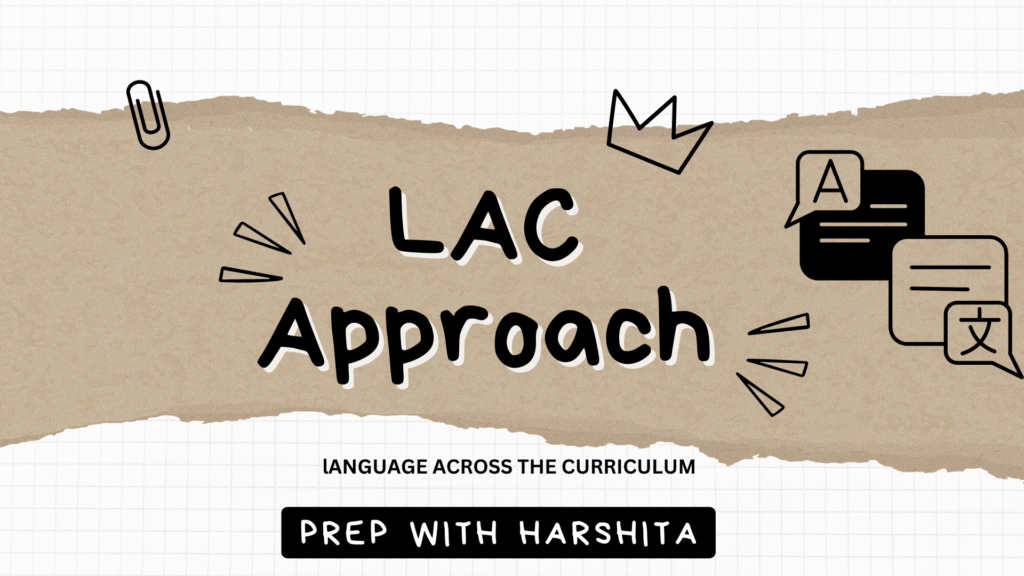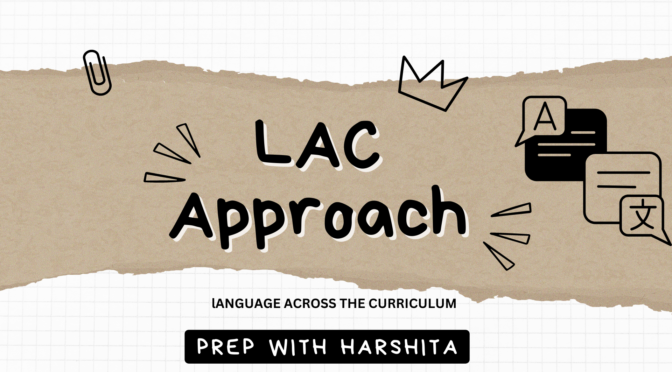The Language Across the Curriculum (LAC) approach is an educational framework that emphasizes the integration of language development and content learning across various subject areas. It recognizes that language is not only a tool for communication but also a fundamental aspect of learning and understanding academic content.
In the LAC approach, language instruction is not confined to language-specific classes (such as English or foreign language classes), but is embedded within the teaching and learning of all subjects. The goal is to support students in acquiring both language skills and subject-specific knowledge simultaneously, promoting a deeper understanding of content and enhancing overall academic achievement.
Here are some key elements and principles of the LAC approach:
- Language as a Medium of Learning: In the LAC approach, language is viewed as a vehicle through which students access and express knowledge across different disciplines. It recognizes that language proficiency is crucial for students to comprehend and communicate ideas effectively in various subject areas.
- Integrated Language Instruction: LAC promotes the integration of language instruction within subject-specific lessons. Language skills (reading, writing, speaking, listening) are explicitly taught and practiced within the context of subject content. Teachers provide explicit language instruction, including vocabulary development, comprehension strategies, and language structures specific to each subject.
- Language Development Strategies: LAC emphasizes the use of language development strategies that support students in comprehending and producing academic language. These strategies may include scaffolding techniques, graphic organizers, explicit language modeling, and providing language-rich resources. The aim is to help students become more competent and confident language users in different academic contexts.
- Content-Specific Language Skills: LAC recognizes that each discipline has its unique language demands and conventions. Teachers focus on teaching subject-specific language skills, such as scientific or mathematical terminology, historical analysis, or persuasive writing techniques. This ensures that students not only understand the content but also develop the language skills necessary to engage with and communicate about that content effectively.
- Collaboration among Educators: LAC encourages collaboration and communication among educators from different subject areas. Teachers work together to plan and design curriculum units that integrate language and content knowledge. They share instructional strategies, resources, and assessments to create a coherent and cohesive learning experience for students across subjects.
- Assessment of Language and Content: LAC incorporates assessments that evaluate both language proficiency and subject knowledge. Assessments may include tasks that require students to demonstrate their understanding of content through various language skills, such as writing an argumentative essay, delivering a presentation, or engaging in a scientific discussion. This allows teachers to gauge students’ language development and content mastery simultaneously.
- Ongoing Professional Development: Implementing the LAC approach requires ongoing professional development for educators. It supports teachers in understanding the language demands of their subject areas, integrating language instruction effectively, and developing instructional materials that align with the principles of LAC.
Overall, the Language Across the Curriculum (LAC) approach seeks to enhance students’ language proficiency and subject knowledge by integrating language instruction within all subject areas. It acknowledges the importance of language as a tool for learning and promotes an integrated and interdisciplinary approach to education.
Also Read: Sources of Knowledge

Also Visit: Prep with Harshita

